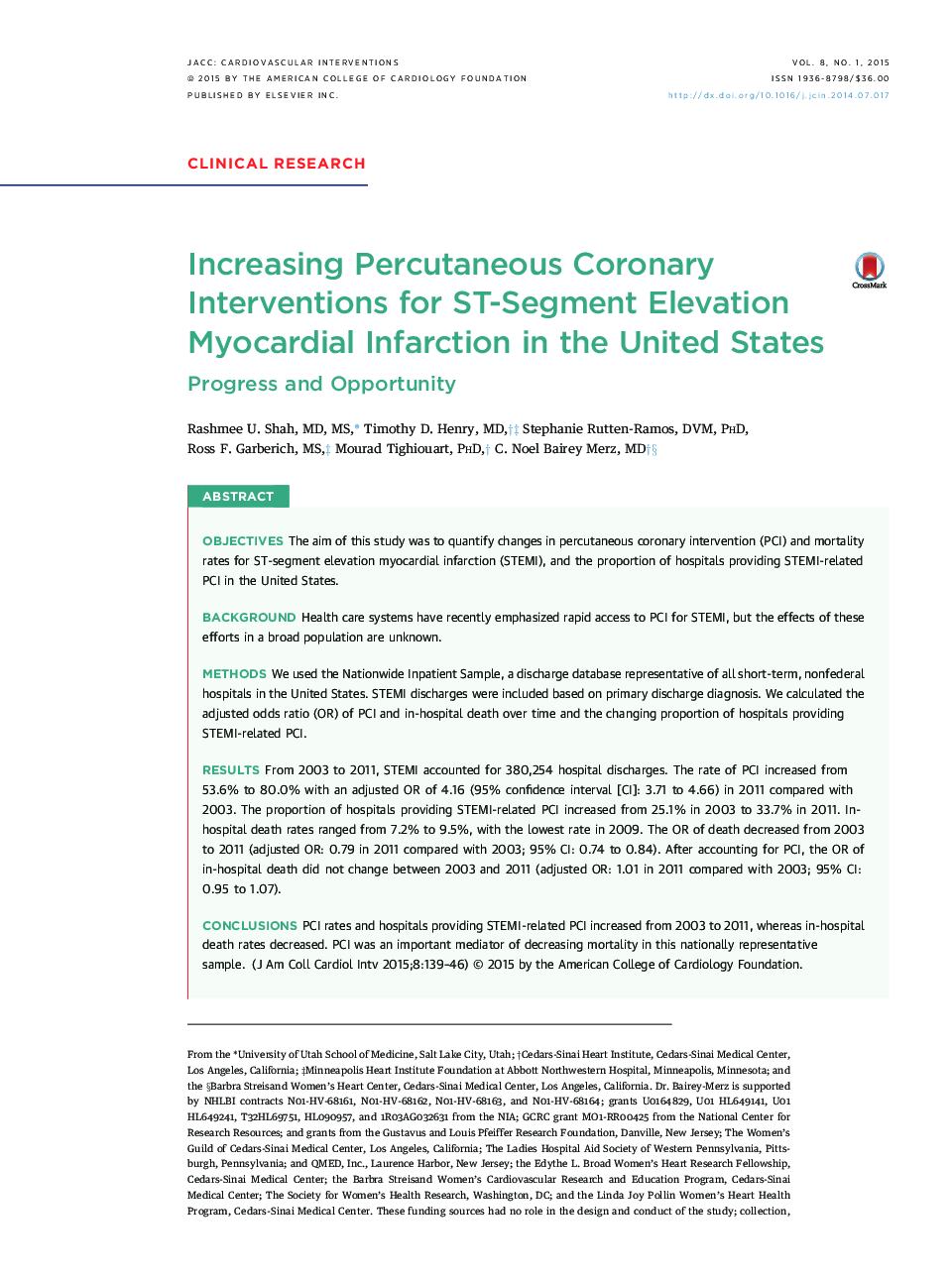| Article ID | Journal | Published Year | Pages | File Type |
|---|---|---|---|---|
| 5981304 | JACC: Cardiovascular Interventions | 2015 | 8 Pages |
ObjectivesThe aim of this study was to quantify changes in percutaneous coronary intervention (PCI) and mortality rates for ST-segment elevation myocardial infarction (STEMI), and the proportion of hospitals providing STEMI-related PCI in the United States.BackgroundHealth care systems have recently emphasized rapid access to PCI for STEMI, but the effects of these efforts in a broad population are unknown.MethodsWe used the Nationwide Inpatient Sample, a discharge database representative of all short-term, nonfederal hospitals in the United States. STEMI discharges were included based on primary discharge diagnosis. We calculated the adjusted odds ratio (OR) of PCI and in-hospital death over time and the changing proportion of hospitals providing STEMI-related PCI.ResultsFrom 2003 to 2011, STEMI accounted for 380,254 hospital discharges. The rate of PCI increased from 53.6% to 80.0% with an adjusted OR of 4.16 (95% confidence interval [CI]: 3.71 to 4.66) in 2011 compared with 2003. The proportion of hospitals providing STEMI-related PCI increased from 25.1% in 2003 to 33.7% in 2011. In-hospital death rates ranged from 7.2% to 9.5%, with the lowest rate in 2009. The OR of death decreased from 2003 to 2011 (adjusted OR: 0.79 in 2011 compared with 2003; 95% CI: 0.74 to 0.84). After accounting for PCI, the OR of in-hospital death did not change between 2003 and 2011 (adjusted OR: 1.01 in 2011 compared with 2003; 95% CI: 0.95 to 1.07).ConclusionsPCI rates and hospitals providing STEMI-related PCI increased from 2003 to 2011, whereas in-hospital death rates decreased. PCI was an important mediator of decreasing mortality in this nationally representative sample.
